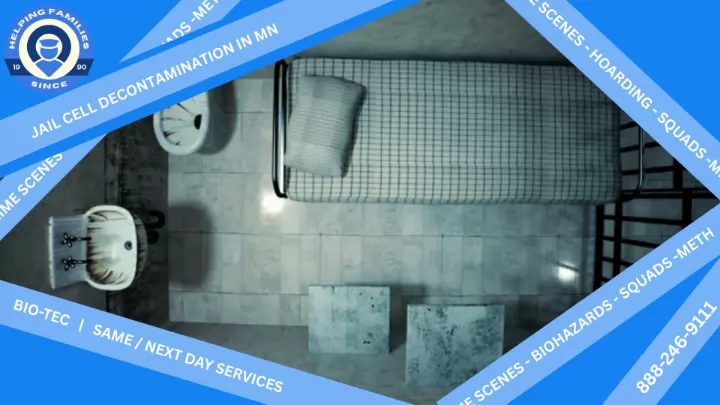Why are HVAC systems a concern in fentanyl-contaminated properties?
HVAC systems in fentanyl-contaminated properties pose a unique risk due to their ability to circulate airborne fentanyl particles throughout the building. Contaminants can accumulate within the ducts, filters, and vents, creating widespread biohazard exposure points. Attempting to clean HVAC systems without professional expertise can exacerbate the issue, spreading contaminants further. Certified professionals are equipped to safely decontaminate HVAC systems, ensuring the property meets safety and health standards.
How quickly should professional suicide cleanup services be called?
Professional suicide cleanup services should be called as quickly as possible after law enforcement and medical examiners have completed their work and released the scene. **Time is of the essence** for several critical reasons. Firstly, the longer blood and bodily fluids remain, the deeper they can penetrate porous materials like concrete, wood, subflooring, and fabrics. This deeper penetration makes the cleanup process more complex, more extensive, and potentially more costly, as more structural elements may need to be removed and replaced. Secondly, the decomposition process begins almost immediately after death. As organic matter breaks down, it releases strong, pervasive odors that can quickly permeate the entire property, becoming increasingly difficult to remove over time. Rapid response helps to minimize this odor absorption and prevent it from becoming deeply embedded. Thirdly, the risk of pathogen spread increases over time. While the immediate risk might vary, the longer biohazards are present, the higher the chance of contamination or exposure if the area is disturbed. Prompt cleanup minimizes this health risk. Finally, from an emotional perspective, a quick cleanup allows grieving families to begin the healing process sooner by restoring the affected space to a clean and safe condition, removing the visual reminders of the tragedy. Many professional cleanup services offer 24/7 emergency response to address these time-sensitive situations. Therefore, as soon as authorities release the scene, contacting a professional suicide cleanup company should be a top priority.
What steps are taken after biohazard materials spill into ventilation systems?
Professionals clean and disinfect the entire HVAC system to ensure it is safe and operable.
Can biohazard cleaning remove odors?
Yes, specialized techniques and equipment are used to eliminate odors caused by biohazard materials.
What steps are taken when hazardous fluids leak into seatbelt mechanisms?
Seatbelts are dismantled if needed, sanitized, and replaced if they cannot be fully decontaminated.
What should I do if I find rodent droppings in my home?
Avoid sweeping or vacuuming dry droppings. Contact a professional cleanup service for proper removal and sanitation.
What steps are necessary when bodily fluids contaminate vehicle-mounted storage boxes?
Storage boxes are emptied, cleaned, disinfected, and sealed to ensure safe use.
What cleaning measures are taken after a crime scene transport?
Specialized cleaning agents and techniques are used to sanitize the vehicle thoroughly.
Is there a difference between cleaning a regularly maintained interior and one heavily contaminated?
Yes, heavily contaminated interiors require a more extensive cleaning process including multiple decontamination stages.
What makes meth lab contamination more dangerous than other household pollutants?
Meth lab contamination is more dangerous than common pollutants because it involves a cocktail of toxic chemicals used during methamphetamine production. Unlike everyday pollutants such as dust or mold, meth-related residues can include volatile solvents, corrosives, and poisons like anhydrous ammonia, red phosphorus, and hydrochloric acid. These substances dont just linger on surfaces—they can absorb into porous materials and persist long after the lab is dismantled. Exposure to even trace amounts can cause serious health problems, including neurological damage, respiratory distress, skin burns, and long-term developmental issues in children. Most concerning is the fact that these chemicals are often invisible and odorless, making professional testing essential to detect and quantify contamination levels accurately.
HOME > blog > Furnace Branch > posts.xml
